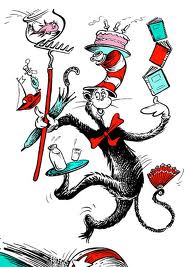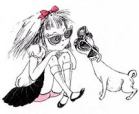“I have a great idea for a picture book. How can I get it published?”
If I had a dollar for every time someone’s asked me that question, I could probably pay for the dental work to repair the teeth it’s caused me to grind into dust.
I can understand beginners asking the question. They assume that because picture books are short, writing them is easy. A happy hour tapping on a keyboard, a little consult with the Rhyming Dictionary, a quick pass through Spellcheck, and voila! Ready to send to a publisher.
Less easy to understand is a professional penning a 1,000-word article called “How to Write a Picture Book” which contains only 7 words actually dealing with the topic of writing, and they are these:
“You need to actually write the book.”
Really? You do? But instead of telling them how, the author leapfrogs over this to more fun stuff like finding an agent, illustrating your story, and promoting your published book. Hard as it may be to accept, aspiring authors are probably better served learning how to “actually write” a picture book before anyone goes stoking their fantasies about fending off all the publishers clamoring to sign them. So in that spirit I offer a few “actual writing” tips for picture books:
1. Think visually. By definition, picture books are a visual medium. Pick a concept or story line that’s illustratable. Someone thinking about something–moping, fearing, wishing— is not easily illustrated. The havoc a certain Cat can wreak on a home is. 
2. Make sure there is some kind of tension. At the very least, there must be a need to find out what comes next. Young readers–just like old readers– must have a reason to keep turning pages. The driving force behind your story can be as complicated as finding out who stole the bear’s hat, or if the Cat can put the house back in order before Mother returns. Or it can be as simple as just wanting to feel the exquisite comfort of bidding good night to every single thing in the Great Green Room as night falls.
3. Make that tension grow. Is it a humorous book? The humor should get funnier–the chaos caused by the mouse, or the Cat–should increase page by page. Is it a scary book? The monsters should get scarier on each page. A quest for something? The obstacles get harder and harder.
4. Give your character some character! 
Think of the great children’s book stars:Eloise, Madeleine, Olivia, Frog and Toad, Max, Winnie the Pooh, Eeyore, the Cat in the Hat. They all have unforgettable personalities. You should be able to describe your main character in one or two adjectives: feisty, stubborn, self-pitying, irrepressible, mono-maniacal…
5. Make sure the ending is satisfying. Max comes home to find…  ….his supper is still warm. Your readers should say “Aaahh” when they come to the end. You’ve given them what they wanted, but not necessarily the way they expected it.
….his supper is still warm. Your readers should say “Aaahh” when they come to the end. You’ve given them what they wanted, but not necessarily the way they expected it.
Your idea for a story has all those potential things–hurrah! Of course, you still have to sit down and “actually write” it. Sorry, but you do. Can’t help you with that part. But when you’re done with the writing, get back to me; then we can talk about agents and illustrators, publishers and promotion and Pulitzer Prizes.
